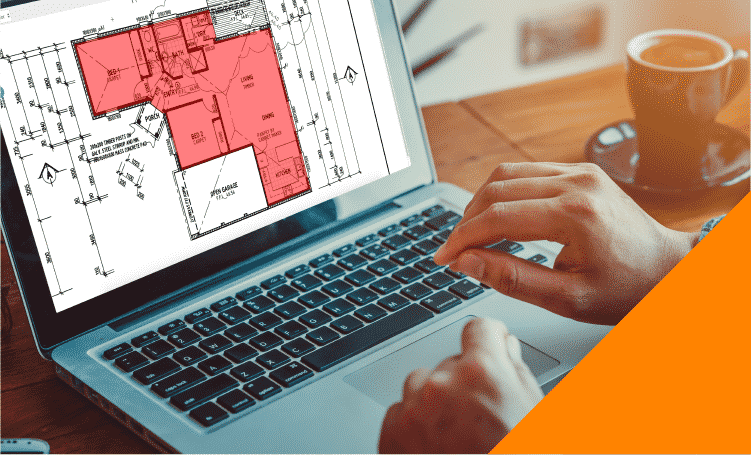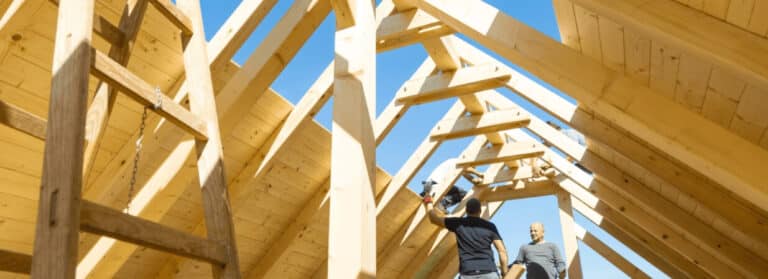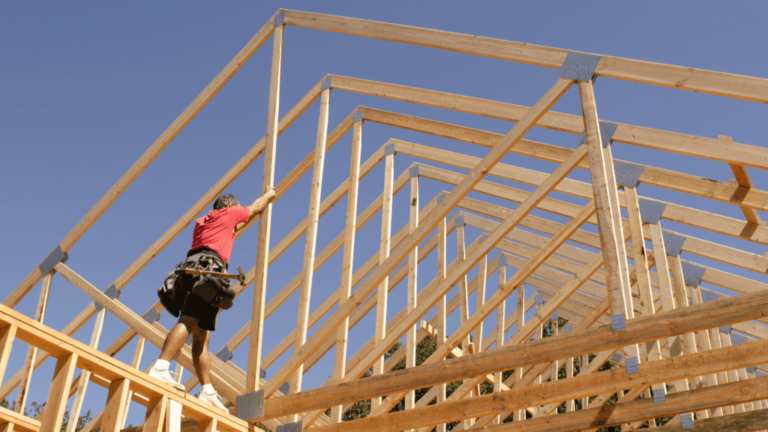Knowing how to reduce construction costs can help you revolutionize your business model so that you run more cost-effective processes and maximize returns.
There are several ways to save money when operating a construction business. Here are some tips to help you spend wisely and save construction costs when completing your next build.
Reducing costs during the design process
Reducing construction costs during the design process could be the key to reducing the total cost of your project. Working with clients to modify design and project scope is an important part of controlling project costs and realizing savings.
During the design stage, you and your clients establish the structures, plans and guidelines you will adhere to throughout the rest of your construction project. By making cost-effective decisions early on, you create a clear budget that you both agree to follow. This is your one-way ticket to creating your client’s dream home without unnecessary financial stress.
These are some ways to reduce construction cost during the design phase of a building project.
1. Reduce scope
It’s important to always be realistic about project scope when undertaking a construction job. Setting clear and achievable expectations can enable you to plan effectively and budget realistically.
As you plan a construction project, think about the financial parameters you’ll need to work within and identify design decisions that may increase the project’s total cost. Communicate clearly with clients to identify areas where changes might be necessary to accommodate your finances. The design stage is a good opportunity to reduce project scope and eliminate costly features that could push the limits of your budget.
2. Reduce complexity
Similarly, reducing project complexity is an easy way to bring costs down during the planning and design process of a construction project. Often, overly complex design features and elements can be expensive and may also be at a greater risk of costly construction material orders and scheduling complications.
By examining your design plans closely, you can identify areas of unnecessary complexity and work to refine and simplify project demands. This will help to save you money when building commences, and it may also make for a smoother, less demanding construction job.
3. Change materials or systems
Sometimes, the best way to save money in construction is by simply changing your materials or systems. Because the most obvious answer isn’t always the right one, it’s important to always consider all of your design options before finalizing plans. This way, you can be confident that you’re making high-quality and affordable choices.
When creating designs for a construction project, think about all the possible solutions to every problem. Some materials are more expensive than others, so when you can, look for cost-saving alternative materials to use in their place. For example, could you reduce costs by choosing vinyl flooring material instead of hardwood? Consider how you can adjust your client expectations to meet the project budget without compromising on overall aesthetic or quality.
How can builders reduce construction cost?
Once designs are finalized and building commences, there are many more ways to reduce overall construction costs even further. If you think strategically, it’s possible to make budget-friendly decisions for the good of your project and your bank account.
1. Consider material alternatives
First, consider material options. Even once the design stage is complete, there are opportunities to alter your plans and accommodate more cost-effective building materials. When these are used broadly across your project, you could save a significant amount of money. Discuss any potential material usage changes with your client to ensure that they are happy with alternative options.
Before you begin work on each new phase of a building job, take a step back and consider whether your choices are the right ones. Could you maintain a standard of work while also saving some extra cash here? When looking for areas to cut costs, it’s a good idea to focus on the small things.
2. Use software to stay on budget
The secret to effective budgeting is planning ahead, and modern technology makes this easier than ever before! Using digital software to create a clear and comprehensive budget-minded plan can help you anticipate financial demands and respond to them effectively without exceeding your limits. As previously discussed, put a budget plan in place early on in your project, and prepare to keep a close eye on rising costs. While you can return and make changes, this plan should act as your guide throughout the duration of the build.
In your budget-friendly construction plan, factor in all important building considerations. What materials will be needed? Will you need to collaborate with other skilled workers? How long will each stage of the project take? Do you have a little extra cash in your budget in case something goes wrong? What labor costs are you anticipating? What is the total square footage of your project? Advanced digital takeoff software like Buildxact can help you predict the overall cost of a construction project with ease and accuracy. Keeping these things in mind will help you prepare for anything.
3. Streamline communication
Clear communication makes it much easier to understand and adhere to a construction budget. Communicate regularly with all project stakeholders, including your client any other builder or contractor working with you. This way, you can ensure that everyone remains on the same page and aware of construction expense considerations. You can make sure no important considerations are forgotten.
Throughout your building project, aim to communicate with your client and any other contractors regularly. Using software like Buildxact, you can set tasks and reminders as you build your project’s cost estimate. This makes it easy for everyone to stay on track as the job progresses.
With software as a guide, you can see how work progresses against the schedule, which can prompt you to ask questions and have your team think about construction progress, time demands, financial constraints and material availability. This can help you predict and manage building construction costs with much more accuracy and confidence.
4. Reduce excess construction waste
Waste is the enemy of saving, so if you’re wondering how to reduce construction cost, it’s important to consider ways to reduce unnecessary waste. Try to save and reuse excess construction materials whenever possible instead of throwing them away. This will enable you to make the most of all available items, which is so important during times of fluctuating material pricing and overall economic inflation.
Reducing waste also is better for the environment; so be resourceful with your materials whenever you can be. Recycled materials can often be helpful later on. If you’re left with an excess carpet square after finishing work in the living area, save it! It might be useful if you find yourself running low in one of the bedroom closets.
5. Eliminate change orders
Change orders can be a major source of construction cost, as clients alter project plans and processes over the course of the build. When these alterations are not factored to your initial budget or plan details, they can cause financial difficulties, even impacting the overall project outcome.
Reducing or eliminating change orders helps you to feel confident and secure in your construction plans. You can do this by communicating your change order processes or expectations with clients before building begins. Remember to be clear and respectful, ideally including change order permissions in a contract.
When mid-build changes are not permitted, you can get on with the construction process, not worrying that project demands could be altered at any moment. This can help you be more resourceful with your available budget and could even reduce the funds you need to set aside for problems or emergencies.
6. Properly manage subcontractors
Employing subcontractors is often an important part of construction work, but labor cost can also be expensive. While you always want to pay contractors fairly for their work, renegotiating fees can be helpful in lowering labor costs and bringing your expenses down, saving money that can better be used for other business administration or construction purposes.
Choose your contractors carefully, looking for the perfect combination of skill and affordability. Before you start work on a new build, set clear contractor prices that allow you to compensate contractors without exceeding your financial limits. You can schedule skilled contractors effectively using Buildxact software, helping you keep track of all staff working on a project. Clear schedules also prevent any miscommunication about when work crews should arrive on a job site. Poor timing can lead to work crews being unable to work, leaving a job site, and not being available later when you need them.
7. Buy dynamically
Dynamic purchasing is a well-known concept in the construction industry, providing you with opportunities to explore the most cost-effective options for your business and project. Buying dynamically allows you to procure all the materials and services you need from a wide range of suppliers, searching for the highest quality at the lowest prices.
Buildxact software offers material suppliers and dealers the ability to integrate pricing directly into the software so that builders can easily see prices as they build their cost estimates. This helps you make budget-friendly choices at a time most convenient to you.
Reducing costs using takeoff software
One of the best ways to reduce construction cost is by using advanced construction takeoff software. Once, the takeoff process involved complex manual estimating and calculations. This process was time-consuming and could result in inaccuracies, comprising the effectiveness of project plans and budgets.
Digital takeoff software now makes it much easier for builders to perform fast, effective takeoff estimates. You can accurately estimate material needs, time demands, staff requirements and budget suitability, all using efficient modern technology. This information is clear and comprehensive, allowing you to plan ahead much more easily. You’ll know exactly what you’ll need to complete a project and how much these items will cost.
By establishing clear cost expectations during the takeoff process, you can determine early on in the construction process whether the project will fit within your budget parameters. If it does, you can get started! If it doesn’t, you can make changes and adjustments to your plans so budget limitations are accommodated before you start building.
Free trial of Buildxact
If you’re looking for excellent digital takeoff and estimating software to help you reduce construction costs, try Buildxact. Book a 14-day free trial of our advanced digital software today!


























